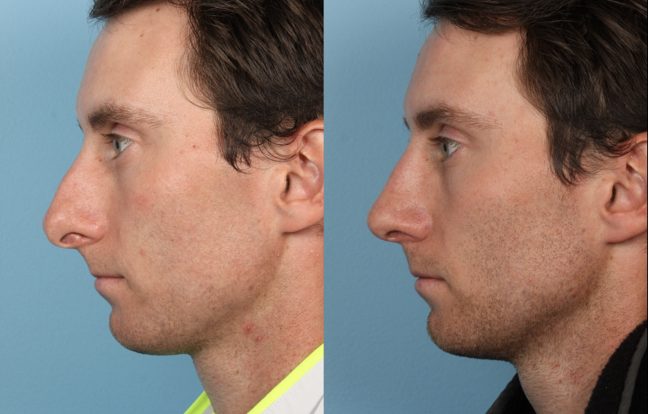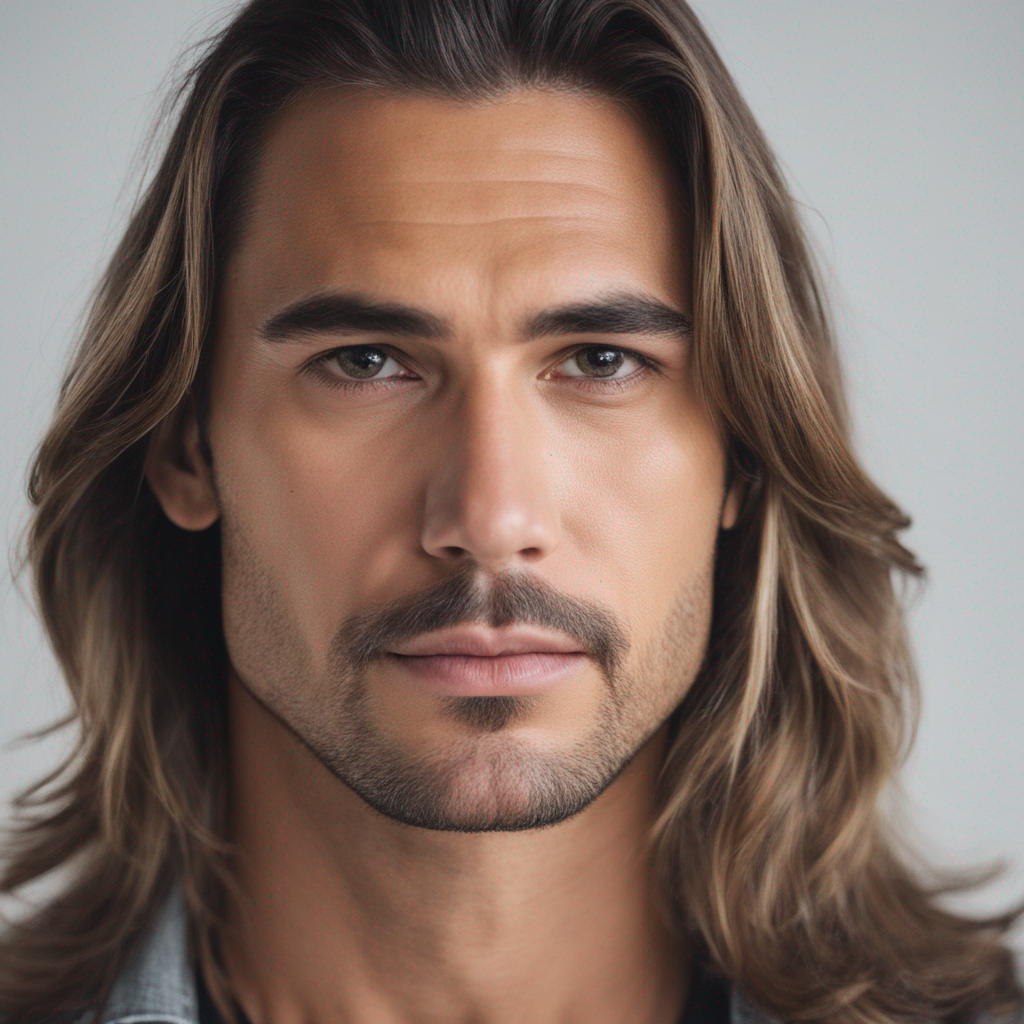Male rhinoplasty is a specialized surgical procedure tailored specifically for men seeking to enhance or correct their nasal features. Unlike generic rhinoplasty, it addresses unique structural differences and aesthetic goals pertinent to the male anatomy, ensuring results that harmonize with masculine facial proportions. This procedure not only improves physical appearance but also can rectify breathing issues, contributing to overall well-being. With advancements in medical techniques, male rhinoplasty offers precise outcomes, emphasizing natural-looking enhancements that boost confidence and align with individual desires.
Understanding Goals and Considerations for Men
Personal Goals
Identifying personal goals is the first step in a man’s transformative journey through rhinoplasty. Men often seek this surgery for two main reasons: to improve breathing or to change their nose’s appearance. Each goal requires a distinct approach.
Breathing improvement focuses on the functional aspect of the nose. It might involve correcting a deviated septum or reducing turbinates. Aesthetic changes, however, aim to alter the nose’s shape or size to enhance facial harmony. Understanding these specific concerns is crucial before proceeding.
Realistic Expectations
The importance of having realistic expectations cannot be overstated in male rhinoplasty outcomes. Surgeons play a crucial role in helping men understand what can and cannot be achieved through surgery.
It’s vital for patients to know that while significant improvements are possible, perfection is unattainable. Factors such as skin thickness, existing facial structure, and healing processes all impact results. Open discussions with surgeons about achievable outcomes help set realistic expectations.
Facial Structure Impact
The impact of facial structure on rhinoplasty considerations for men is significant. Male faces typically have stronger, more angular features compared to female faces.
Surgeons must consider these differences when planning surgery. For instance, maintaining a masculine profile while making desired changes requires precise adjustments. The goal is always to ensure that any modifications complement the overall facial structure without diminishing masculinity.
Tailoring Techniques for Masculine Aesthetics
Preserving Features
Male rhinoplasty aims to maintain masculine features while improving nasal symmetry. Surgeons focus on the unique aspects of male facial anatomy. They ensure the nose fits well with other facial features. This approach avoids creating a look that seems out of place.
A key goal is to enhance, not alter, the masculine appearance. This means keeping the natural lines and shapes that define a masculine nose. It’s about subtle changes that make a big difference.
Adjusting Proportions
The right proportions are crucial for a masculine nose. Surgeons measure carefully to ensure balance with the rest of the face. They consider factors like the width of the nostrils and the angle between the nose and forehead.
Adjustments must suit male facial structures specifically. For example, a slightly higher bridge may be desirable for some men to achieve a more pronounced profile.
Avoiding Feminization
Avoiding feminization is essential in male rhinoplasty. Certain techniques can unintentionally soften masculine features, leading to dissatisfaction with results.
-
Key techniques include:
-
Minimal rounding at the tip of the nose.
-
Maintaining or enhancing angularity where appropriate.
-
Avoiding excessive narrowing of nasal structures.
-
Preoperative Planning and Ethnic Considerations
Cultural Identity
Male rhinoplasty must respect a patient’s ethnic background. Surgeons aim to enhance the nose while preserving cultural identity. This approach avoids creating a “one-size-fits-all” look.
Skin thickness and nasal structure vary among ethnic groups. These factors influence the surgery plan. For example, thicker skin requires different techniques than thinner skin for shaping the nose.
Detailed Imaging
Imaging technology plays a crucial role in planning surgery. It helps align the visions of the surgeon and patient. This step ensures expectations are realistic and achievable.
A detailed discussion between surgeon and patient is essential. It clarifies goals and addresses concerns about maintaining ethnic characteristics.
Surgery Techniques and Recovery Insights
Open vs. Closed
Open and closed rhinoplasty are the main surgical techniques for a nose job surgery. The open approach involves a small incision under the nose. This allows better access but may leave a small scar. Closed rhinoplasty happens entirely inside the nostrils, leaving no external scars.
The choice between these methods depends on your goals and anatomy. Open rhinoplasty offers more visibility for complex changes. Closed techniques are less invasive with quicker recovery times.
Recovery Timeline
Recovery from male rhinoplasty varies by individual and technique used. Generally, expect to take one to two weeks off work or school. Most major swelling subsides within six weeks, but full healing takes up to a year.
Immediate post-op care is crucial for smooth recovery. Keep your head elevated and apply cold compresses to reduce swelling. Follow all outpatient procedure instructions closely to avoid complications.
Swelling and Bruising
Male skin often reacts differently than female skin after surgery due to its thickness and texture. Men might experience more pronounced swelling and bruising post-rhinoplasty.
To manage these effects:
-
Use arnica cream or supplements.
-
Stay hydrated.
-
Avoid strenuous activities.
Sticking strictly to your surgeon’s advice will help minimize discomfort during this period.
Addressing Functional Issues and Enhancing Aesthetics
Breathing Corrections
Male rhinoplasty often addresses breathing issues. These stem from a deviated septum or other obstructions. Surgeons use specific strategies to correct these problems.
A common approach involves straightening the nasal septum. This improves airflow significantly. Patients notice a difference in their daily activities and sleep quality.
Aesthetic Balance
Achieving facial harmony while correcting structural issues is key. Male patients seek both functional improvements and cosmetic goals. Surgeons must balance these desires carefully.
They consider facial symmetry, contours, and unique features during surgery. The goal is to enhance the patient’s natural look without compromising function.
Structural Support
Integration of structural support is crucial for long-term results. It prevents future breathing or aesthetic complications.
Surgeons may reinforce the nasal structure using cartilage grafts. This ensures stability and maintains the desired shape over time.
-
Pros:
-
Improved breathing
-
Enhanced facial appearance
-
Long-lasting results
-
-
Cons:
-
Complexity of surgery increases
-
Longer recovery time might be necessary
-
Risks, Recovery, and Aftercare Specifics for Male Patients
Common Risks
Male rhinoplasty, like any surgical procedure, comes with its own set of risks. These include infection, bleeding, and dissatisfaction with the outcome. However, mitigation strategies can significantly reduce these risks.
To minimize the chance of infection, surgeons prescribe antibiotics. For bleeding, patients are advised to avoid strenuous activities post-surgery. Open communication with your surgeon about expectations can also lessen dissatisfaction.
Mitigation Strategies
Choosing an experienced surgeon is crucial for reducing risks associated with male rhinoplasty. Surgeons who specialize in male facial structures will understand the nuances of male skin and healing patterns.
Patients should follow all pre-operative instructions carefully. This includes stopping certain medications and avoiding smoking to ensure optimal healing.
Post-Operative Care
After surgery, men may find their skin reacts differently compared to women’s due to thickness and oiliness. It’s important to follow a care routine tailored to these differences.
Surgeons often recommend gentle cleansing routines and specific products that won’t irritate the healing skin. Keeping the head elevated while sleeping can also reduce swelling more effectively in men.

Follow-Up Appointments
Follow-up appointments are vital for tracking recovery progress and addressing any concerns early on. They allow surgeons to monitor healing accurately and make adjustments if necessary for optimal results.
During these appointments, patients have the opportunity to discuss pain management options and get advice on when it’s safe to return to daily activities or exercise routines.
Long-Term Results and Maintenance
Realistic Timelines
Setting realistic timelines is crucial for male rhinoplasty patients. The final results are not immediate. It can take up to a year for swelling to fully subside and the true outcomes to emerge.
Patients often notice significant changes within the first few months. However, subtle adjustments continue over time. Understanding this timeline helps manage expectations and satisfaction with the procedure.
Maintenance Advice
To preserve rhinoplasty outcomes, follow-up care is key. Avoid activities that could impact the nose’s structure during recovery. This includes contact sports or heavy lifting.
Regular check-ups with your surgeon ensure healing is on track. They also provide an opportunity to address any concerns promptly. Protecting your nose from sun exposure is another simple yet effective maintenance tip.
Minor Revisions
Sometimes, minor revisions may be necessary for optimal results. These adjustments are usually less extensive than the initial surgery.
The need for revisions often becomes apparent after the primary swelling has decreased significantly—usually around one year post-operation. A thorough evaluation of both cosmetic appearance and functionality determines if revisions are warranted.
Choosing a surgeon with extensive experience in male rhinoplasty increases the likelihood of achieving desired outcomes without needing multiple revisions.
Choosing the Right Surgeon and Preparing for Consultation
Surgeon Selection
Selecting the right surgeon is crucial for a successful male rhinoplasty. Look for plastic surgeons with extensive experience in male rhinoplasty. Their expertise ensures they understand the unique aspects of male facial structure.
Research their credentials and reviews. A board-certified surgeon is a must. They should have a portfolio of before-and-after photos showcasing their work on men. This helps gauge their skill level.
Consultation Preparation
Before your initial consultation, prepare thoroughly. List all your questions and concerns about the procedure. Include topics like recovery time, risks, and costs.
Discuss your goals openly with the surgeon. Bring photos that represent your desired outcome if possible. This aids in developing an accurate surgical plan together.
Understanding before-and-after galleries during consultation is vital. They offer insight into what’s achievable through surgery and help set realistic expectations.
-
Pros of reviewing galleries:
-
Helps assess surgeon’s skill.
-
Sets realistic expectations.
-
-
Cons:
-
May not find exact match to individual needs.
-
Summary
Male rhinoplasty stands as a pivotal procedure for men seeking not only aesthetic enhancement but also functional improvement. It requires a nuanced approach, blending technical precision with an understanding of masculine aesthetics. Tailored techniques ensure that each patient’s unique goals and ethnic considerations are met, while meticulous preoperative planning paves the way for effective surgery and recovery. The journey from consultation to long-term maintenance involves navigating potential risks, adhering to aftercare specifics, and choosing the right surgeon—a decision critical to achieving desired outcomes.
The significance of male rhinoplasty extends beyond mere physical transformation; it impacts self-perception and confidence. Those considering this procedure should engage with experienced surgeons who appreciate the subtleties of male facial structure and can provide comprehensive care throughout the surgical process. Let this guide serve as a foundational step towards making informed decisions about male rhinoplasty, encouraging further exploration and consultation with qualified professionals.
Frequently Asked Questions
What are the primary goals of male rhinoplasty?
The primary goals include addressing functional issues, enhancing facial aesthetics while maintaining masculine features, and ensuring the nose fits harmoniously with other facial structures.
How do techniques differ for men in rhinoplasty?
Techniques are tailored to preserve or enhance masculine aesthetics, often focusing on creating a straighter profile and a more defined nasal tip.
What should be considered in preoperative planning for male rhinoplasty?
Preoperative planning involves considering the patient’s ethnic background, desired aesthetic outcome, and any functional issues that need correction.
What can patients expect during recovery from male rhinoplasty?
Patients can expect swelling, bruising, and discomfort initially but will see gradual improvements as they recover over weeks to months. Strict adherence to aftercare instructions is crucial.
How are risks managed specifically for male patients undergoing rhinoplasty?
Risks are managed through thorough preoperative assessment, precise surgical technique, and detailed post-operative care instructions tailored to male patients’ specific needs.
Why is choosing the right surgeon important for male rhinoplasty?
Choosing a surgeon with experience in male rhinoplasty ensures understanding of unique considerations such as skin thickness and facial structure differences—key factors in achieving desired outcomes.
How long do results from male rhinoplasty last?
Results from male rhinoplasty are typically long-lasting. However, minor changes may occur with aging. Regular follow-up consultations help maintain the results over time.





